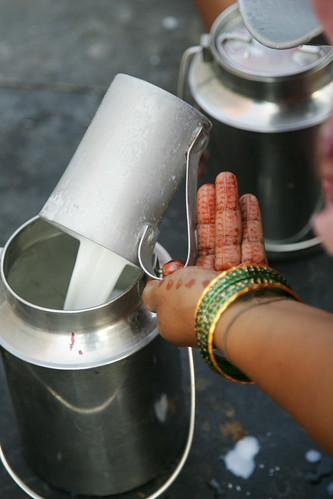A recent article in the Economist — ‘Indian policymakers should see agriculture as a source of growth, not votes’ — in its 13-19 Mar 2010 issue states that: ‘Indian agriculture has performed so poorly largely because governments have treated it as a source of votes rather than as an engine of growth. . . . India’s government still fixes prices and subsidises inputs, when public money would be far better spent on infrastructure and research. . . . India needs to stop seeing agriculture as a problem to be nursed and start thinking of it as an opportunity to be grasped. . . . India is already an agricultural force in some crops. It is the second-biggest exporter of cotton and was a net exporter of cereals for a decade after 1995 . . . .’
What the Economist article omits to mention is that India nearly a decade ago (2001) became the world’s biggest milk producer. Remarkably, almost all of that milk is produced by some 40 million households keeping just a few cows or buffaloes on small plots of land. Those households are, indeed, an opportunity to be realized.
For more information about smallholder dairy research, visit ILRI’s ‘Livestock Markets Digest‘ blog.


Just to add to the observation – among the milk produced only 20% is marketed in the organised sector, onus on majority of the activites of dairying are vested with women. There is a graet scope to produce more from the cattle/buffaloes they rear – since a majority are raising livestock against the ideal situations of dairying!- Improved crossbred animals on one side and …not enough fodder grass, purchased costly (and often mentioned as low quality) concentrtaes and above all low/no control in fixing the price of milk.. on another side. An important aspect that is being recognised is the use of knoweldge and knoweldge dissemiantion methods in improvingt he situaton